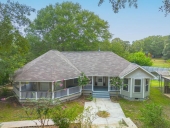
 2
2




 2
2




The holy trinity of wholesomeness: Fred Rogers - be kind to others; Steve Irwin - be kind to animals; Bob Ross - be kind to yourself





"Never doubt that a small group of thoughtful, committed citizens can change the world; indeed, it's the only thing that ever has."-Margaret Mead "The only thing worse than being blind, is having sight but no vision."-Helen Keller




Roberto pokachinni wrote:Another thought: A friend of mine is planning to build his house based on equal sized hexagons, starting with one, and then joining the next through an equal length adjoining wall.
"Our ability to change the face of the earth increases at a faster rate than our ability to foresee the consequences of that change"
- L.Charles Birch
My Herbal Tea Store (CA)








"The highest function of ecology is the understanding of consequences."
"Cultivate gratitude; hand out seed packets"


















"Never doubt that a small group of thoughtful, committed citizens can change the world; indeed, it's the only thing that ever has."-Margaret Mead "The only thing worse than being blind, is having sight but no vision."-Helen Keller
 1
1




Jarret Hynd wrote:
Roberto pokachinni wrote:Another thought: A friend of mine is planning to build his house based on equal sized hexagons, starting with one, and then joining the next through an equal length adjoining wall.
I've pondered similar thoughts during my house design planning. Starting with 1 building and then making 2 or 3 more which would then make an inner "court yard". Mine wouldn't be as fancy as the picture though lol. Considering flexibility, one could make three 400 square foot structures which could be moved easily(bnb) or put close together to form a single home.
...










Iterations are fine, we don't have to be perfect
My 2nd Location:Florida HardinessZone:10 AHS:10 GDD:8500 Rainfall:2in/mth winter, 8in/mth summer, Soil:Sand pH8 Flat







Iterations are fine, we don't have to be perfect
My 2nd Location:Florida HardinessZone:10 AHS:10 GDD:8500 Rainfall:2in/mth winter, 8in/mth summer, Soil:Sand pH8 Flat




Medicinal herbs, kitchen herbs, perennial edibles and berries: https://mountainherbs.net/ grown in the Blue Mountains, Australia


















"Never doubt that a small group of thoughtful, committed citizens can change the world; indeed, it's the only thing that ever has."-Margaret Mead "The only thing worse than being blind, is having sight but no vision."-Helen Keller












 2
2




John Daley Bendigo, Australia The Enemy of progress is the hope of a perfect plan
Benefits of rainfall collection https://permies.com/t/88043/benefits-rainfall-collection
GOOD DEBT/ BAD DEBT https://permies.com/t/179218/mortgages-good-debt-bad-debt




Roberto pokachinni wrote:When you do your rebar work for your initial slab you can have it extend beyond in the direction you plan to expand, so that you can lap the next slab's rebar against it and tie it together with wire; that way your next slab is tied to the grid of the initial slab. This will be a bit finicky as you will need to drill some holes in your form board to slide the rebar through, and you will have to get the board off the rebar after the concrete is good and set, and that will take some finangling-but that's how I conceive of doing it.

|
Gimmie! Gimmie dammit! Gimmie that tiny ad!
The new purple deck of permaculture playing cards
https://www.kickstarter.com/projects/paulwheaton/garden-cards
|





